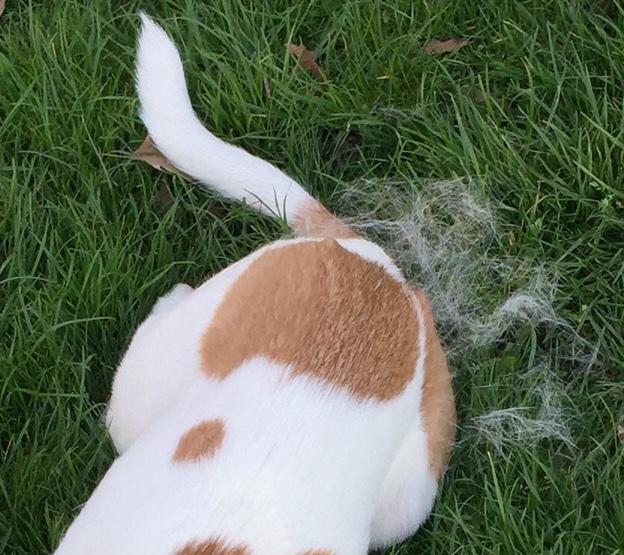The health of a pet's hair coat can be affected by illness, stress, pregnancy, hormonal changes, and poor nutrition. These situations can result in slowed hair growth, a coat that appears dull, dry, or lusterless in appearance, and possibly hair loss.
Hair loss (alopecia) can occur in dogs and cats. Areas of hair loss can be focal (affecting a specific spot or area of the body) or it can be widespread. Hair loss can develop for a variety of reasons, and as such, the veterinarian may suggest a variety of laboratory tests to aid in diagnosing the underlying problem. Some of the possible causes include:
Self-trauma
An itchy pet may excessively lick, chew, or scratch itself. This can result in hair loss. Possible causes for this behavior include:
Hormonal Causes
Nutritional Causes
Autoimmune Disorders
Shedding
Dogs and cats normally shed a portion of their hair coat in waves, and these periods typically coincide with the daily photoperiod (number of hours of sunlight per day). Dogs in the wild typically shed in the spring and fall months. Dogs and cats with exposure to indoor artificial light may shed continually year round.

Regrowth of Hair After Hair Loss, Shaving or Clipping
Normally, hair growth occurs in cycles - it does not grow continuously. Because of the cyclical nature of hair growth, a pet that is clipped or shaved (e.g. for a medical procedure) may take weeks or months to regrow its hair. In dogs with a normal or short hair coat, that could take as long as 4 months. Dogs with a long hair coat could take as long as 18 months to regrow their hair.